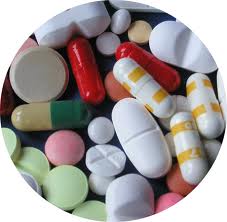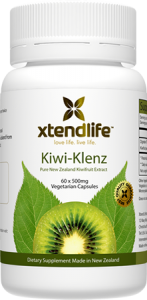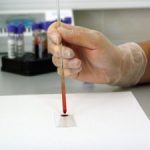
There are two types of diabetes.
- Type 1 is insulin-dependent diabetes mellitus (IDDM), previously known as juvenile onset diabetes.
- Type 2 is non-insulin diabetes mellitus (NIDDM), the most common and increasingly prevalent. Previously called adult-onset diabetes, type 2 has the closest relationship with diet, environment and lifestyle issues. These may have a slightly different focus for management but there are commonalities between them.
The rapid increase in the Type 2 diabetes global epidemic is due to a number of factors and is a complex issue. Scientists agree lifestyle factors play a large part, obesity as 90 % diagnosed with Type 2 are significantly overweight followed by genetic and environmental factors, sedentary lifestyle choices, poor diet, chronic stress,increased inflammation and oxidation. Problems with kidney hormone function , hormones and persistent environmental chemicals also play a significant role.
Type 2 Diabetes Symptoms
Many people have no symptoms of Type 2 diabetes and it will often be discovered during a routine medical checkup.If you do have symptoms of diabetes the most common ones are:
[unordered_list style=”tick”]
- Excessive urination ( the word diabetes comes from the greek for fountain)
- Constant thirst ( especially a desire for sweet sugary drinks)
- Constant fatigue or tiredness
- Blurred vision
- Itchy skin around the genital or anal area
- Regular infections such as thrush
- Poor wound healing
- Unexplained increase or decrease in weight over several months
- Tingling,numbness or pain in the hands/feet
[/unordered_list]
Diabetes in your body
- Diabetes is a condition of hyperglycaemia (high blood glucose/ sugar), which can result from at least two scenarios: low insulin production associated with pancreatic damage (commonly oxidative damage); or high insulin levels that are ineffective in managing blood glucose levels.
- Type 2 diabetes frequently starts with the latter and progresses to the former. Type 1 diabetes is commonly the former scenario and has a much stronger genetic association.
In its progression, type 2 diabetes follows multiple, mutually reinforcing pathways, each path interacting with and amplifying the others. There are multiple points of intervention in its prevention or management and manipulating these should improve the condition significantly — not just slow its progression.
To understand how this process works and therefore how to manage it more successfully, it’s important to understand how insulin works in the body.
The Insulin Factor : Type 2 Diabetes and Foods
The regulation of blood sugar levels is generally tightly controlled, despite long intervals between meals and an erratic intake of high-glycaemic carbohydrates, and the mechanisms for regulating these blood levels (either high or low) are efficient and effective.
In response to the consumption of food (mainly carbohydrates), blood glucose levels rise as the carbohydrates are absorbed and the beta cells in the islets of Langerhans in the pancreas release insulin (proportionally). Attaching to the glucose in the blood, insulin carries it to cells where it is transported across the cell wall by a receptor (known as glucose tolerance factor) to be converted into energy.
When excess carbohydrates are consumed, the excess glucose is stored as glycogen in the liver and muscle tissue until the blood glucose levels drop and the pancreas stops releasing insulin. However, when blood glucose levels drop too low, the hormone glucagon is released from the alpha cells in the pancreas. This then triggers the release of glycogen from the liver (as glucose), bringing the blood glucose levels back to normal.
Stress And Diabetes
Stress affects this process, as the stress hormone noradrenaline strongly inhibits the secretion of insulin. Blood glucose levels can therefore increase proportionally to stress levels. This mechanism is part of the “fear, fight, flight” syndrome where higher levels of glucose (and fats) in the blood are essential for the bursts of activity that may be life-saving when threatened. This mechanism allowed humans to survive for millennia but is not always so useful today when our challenges are often more mental than physical — yet we still have the same physiological response to a challenge.
After many years of overuse due to poor diets and excess stress, the receptor sites on the cells — the glucose tolerance factors —become “tired” and less functional and the person has increased difficulty utilising their carbohydrates appropriately. Eating a diet high in processed foods that are low in the essential nutrients for this receptor site — ie chromium, magnesium, B vitamins —exacerbates this problem. Eventually, the person develops the condition known as insulin resistance.
Insulin Resistance
Multiple pathways are involved in the development of insulin resistance and, ultimately, diabetes. After many years of eating a high-carbohydrate (high-glycaemic) diet, the cell receptor sites in your body become damaged by the constant high levels of insulin and begin to malfunction. The result of this is that many cells in your body, particularly liver, muscle and fat cells, become “resistant” to normal amounts of insulin and require increasing amounts to be able to respond.
As the cellular receptor sites are compromised, blood glucose rises, so in turn the beta cells in the pancreas increase their output of insulin to bring blood glucose levels back to normal. This works for a while but ultimately puts increased stress on the beta cells until they eventually become exhausted and lose their ability to function correctly; that is, to produce adequate insulin appropriate to the
person’s diet.
 Stress affects this process as the stress
Stress affects this process as the stress
hormone noradrenaline strongly inhibits
the secretion of insulin.
Blood glucose levels can increase
proportionally to stress levels.
Complications then develop from the increasing blood glucose levels, such as:
The person becomes increasingly thirsty as the body attempts to excrete the sugar, leading to increased urination and causing greater stress on the kidneys.
Excess sugar in the blood causes the small blood vessels leading to the major organs to narrow, thus reducing circulation, leading to many of the complications associated with diabetes.
The stress of this dysfunctional process affects the adrenal glands, resulting in higher levels of adrenalin being secreted, increasing the free fatty acid levels in the blood and reducing the secretion of insulin.
The excess sugar in the blood alters fat metabolism and increases the risk of the development of plaques in the arteries, known as atherosclerosis.
Nerve damage to the peripheral nerves can develop — a called diabetic neuropathy. This occurs mainly in the nerves hands and feet, causing numbness, tingling and pain. Foot diabetics becomes critical with diabetic neuropathy as any is often not felt by the person (due to numbness) and any very slow to heal. The ultimate outcome can be gangrene if is not noticed and dealt with early.
The hormone insulin is a major regulator of metabolism. A consistently high level can cause damage and contribute to such as heart disease, atherosclerosis, increased cholesterol triglycerides, high blood pressure, fat accumulation and weigl-t and involves significant vitamin and mineral deficiencies.
As the ability of the beta cells to produce insulin is incr compromised, the more severe and recognizable complications diabetes start to manifest. These include neuropathies (som leading to amputation), kidney failure (with dialysis treatment required), cataracts leading to blindness, and cardiovascular
Chronic systemic inflammation, especially in the adipocytes (fat cells) is an associated factor.
Type 2 Diabetes Inflammation
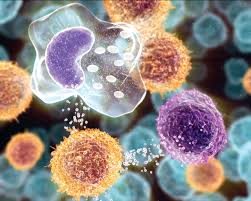
Treatment of inflammation may be a potential strategy in the prevention and treatment of type 2 diabetes, particularly when the body is resistant to the effects of insulin. Recent studies reveal that the chronic activation of the immune system due to low-inflammation is associated with obesity and this in turn, promoted the development of insulin resistance and impaired glucose tolerance.
A growing body of evidence suggests that obesity in itself may be an inflammatory condition and that people with type 2 diabetes and obesity have more pronounced, uncontrolled and longer-lasting inflammatory responses than normal. A genetic susceptibility to cardiovascular disease has been linked to abnormalities in a glucocorticoid receptor and in high C-reactive protein levels (an inflammatory marker in the blood), which is also associated with decreased sensitivity to cortisol, the naturally occurring glucocorticoid that plays a central role in the stress response as well as in the regulation of inflammation in humans.
Therefore, type 2 diabetes and cardiovascular disease can be triggered by a chronic inflammatory response as a result of diminished glucocorticoid receptor sensitivity — a chronic stress issue.
Stress management and inflammation
High stress levels can lead to increased secretion of cortisol and subsequently to abdominal fat accumulation and reactive insulin hypersecretion. The results of these high stress levels are dyslipidaemia, hypertension, hyper-coagulation of the blood (thicker blood) and type 2 diabetes in those with a genetic predisposition. Recent studies have shown an association with abdominal (visceral) fat, insulin resistance, inflammatory cytokines, stress hormones and sleep apnoea, which in turn may accelerate these metabolic abnormalities.
Chemical Diabetes Triggers
The evidence suggests environmental chemicals may play a significant role. These ideas are controversial but rate a mention as there is research to support them. When researching this article in medical databases, I found close to 170,000 articles about the risk of developing type 2 diabetes with chemical exposure. Though controversial, there is a lot of information about this link. A recent study in Korea found diabetes five times more prevalent in people with higher blood and tissue concentration of pesticides and other chemicals, with higher concentrations showing greater proportional risk.

“Obesogens” is the name given to environmental pollutants that can disrupt or interfere with hormone functions in humans, including the glucose and fat-tissue-related pathways. These may be even more disruptive during critical windows of prepubertal and pubertal development.
What was particularly interesting about these results was that they found no association between obesity and type 2 diabetes in people with very low levels of organic pollutants, despite so much of the research being focused on diabetes and issues with lifestyle and obesity. The results of this study of more than 2000 people determined that the risk of diabetes may be more associated with chemical exposure (and bodily storage) than with simply being overweight.
A pertinent point here with diet is that those consuming a “poor” diet are generally consuming more processed foods — and therefore more chemicals, preservatives and pesticides — than people eating fresh, organic foods (for example). Hence these people are also more likely to be overweight and have problems with chronic inflammation. Chemical exposures may also increase the risk of diabetes by altering the differentiation of adipocytes (fat cells) or by the development of neural circuits that regulate feeding behavior —the “obesogen hypothesis”.
Cosmetics

Pharmaceuticals
There is increasing research suggesting many of our common pharmaceuticals, if taken long-term, may also contribute to the development of diabetes. Pharmaceuticals that have been implicated are antibiotics, diuretics and some drugs for high blood pressure, among others.
One explanation is that these drugs have a particular affinity for zinc. It’s reputed that the pancreas has the highest storage of zinc in the body and that these chemicals bind with zinc in the beta cells (the insulin-secreting cells) of the pancreas.
In doing so, they can displace the insulin bound to the zinc, changing the pH of the beta cells and triggering an immune response, producing antibodies against the person’s own beta cells.
Remember, however, that many of these pharmaceuticals are a lifesaving, so don’t stop using them without medical advice.
The Gut
Variations in the gut microflora have been shown to be critical in the accumulation of toxins in humans and can effectively regulate the impact of exposure to environmental chemicals. Individual variation in gut microbial balance needs to be taken into account when deal with the effect of environmental chemicals on diabetes and obesity.
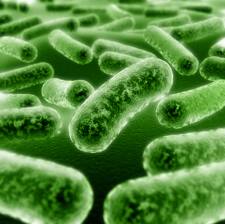
Gut microbial communities have complex interactions with diet, adiposity and satiety hormone levels as well as inflammation and immune function. Higher blood glucose in diabetics has been correlated with reduced ratios of Bacteroides, Clostridia and increased Proteobacteria than in non-diabetics. The nature of gut bacteria themselves is linked to type 2 diabetes via an endotoxin-induced inflammatory response.
Increased gut permeability (leaky gut) may also affect the absorption of antigens, toxins or chemicals that can potentially damage pancreatic cells. Increased bioavailability of “obesogens” may occur with abnormal gut flora , abnormal gut motility and abnormal barrier function.
These changes may also affect absorption, metabolism and bioavailability of a range of pharmaceutical drugs and can contribute to the incresing risk of diabetes.
Gut microbial populations differ significantly in obese and lean subjects ( and in type 2 diabetes). This area needs much more research to explore the impact of gut microflora variability and the effects these have on the impact of the environmental chemicals in humans, particularly the “obesogenic” and “diabetogenic” chemicals.
Changes in gut microflora affect not only levels of gut metabolic enzymes but also liver enzymes , both the phase 1 and phase 2 liver detoxification enzymes. These are critical in cellular detoxification, particularly of environmental chemicals.
Medical Testing and what it means..

- • FBG: Fasting blood (serum/ plasma) glucose. This involves fasting overnight and blood being taken in the morning. Normal serum glucose range is 3.6-6 mmol/L.
- GTT: Glucose tolerance test. This is often conducted over several hours. Blood is taken (when fasting) to measure blood sugar, a glucose solution is drunk and the blood sugar is measured every 30 minutes for 3-6 hours. This is an accurate measure of how your blood sugar is being metabolised. Normal range varies with amount of glucose drunk.
- Two-hour postprandial test (postprandial means “after a meal” ): The blood is tested two hours after eating. Normal values are less than 7.9 mmol/L.
- Random blood glucose: Blood taken at any time with normal values 3.6-7.7 mmol/L.
- HbA(1c): Glycosylated haemoglobin A1C. This measures how much glucose is attached to red cells and therefore is a measure of how high blood sugar has been in recent months. Normal values for non-diabetes are 4-6 per cent. Normal for diabetics is less than 7 per cent. If this is 8 per cent or higher, it’s an indication that blood sugar levels are not controlled.
- Insulin (fasting): Normal is 0-20 mcgm/L and a score of 10-15 indicates resistance to insulin.
Other measures:
- CRP: C-reactive protein (a measure of inflammation). Normal is 0-0.5 mg/L.
- ESR: Erythrocyte sedimentation rate, a measure of inflammation. Normal range is 1-35 mm/h.
- ACE: Angiotensin I-converting enzyme, a measure of blood pressure involvement.
“Obesogens” is the name given environmental pollutants can disrupt or
interfere with hormone functions in humans, including the glucose and fat
tissue related pathways”
Diabetes Diet Plan
The prevention and management of type 2 diabetes must emphasize significant lifestyle modifications — weight loss, increased physical activity and a
healthy diet — as part of the first line of therapy.
In over weight individuals particularly “apple-shaped” people with abdominal obesity, weight loss is beneficial for treating all the components of diabetes and the differences are dramatic.
Weight loss as small as 5-10% of bodyweight can improve the symptoms by 41 %. For every kilogram of weight loss, the risk of developing diabetes Type 2 is slashed by 16 per cent.
Important features of a healthy diet are related closely to the choices of food rather than the number of calories alone. Dietary carbohydrate increases blood glucose levels, particularly after a meal (postprandial), and consequently insulin levels and plasma triglycerides. The detrimental effects of a high-carbohydrate diet on plasma glucose/insulin, triglyceride/HDL levels occur only when carbohydrate foods with a high glycaemic index are consumed.
If the diet is based largely on fibre-rich, low-glycaemic-index foods, these abnormalities don’t occur.
A low-glycaemic-index meal should be below 50 and the glycaemic index is determined by using the rate of glucose absorption as the standard, and that is determined as 100. Regular consumption of foods with a high glycaemic index may increase the risk of obesity, type 2 diabetes and cardiovascular disease by promoting excessive food intake, pancreatic-cell dysfunction and dyslipidemia.
Small changes in foods can make a big difference; for example, basmati rice has a low glycaemic index (55) and jasmine rice has a high glycaemic index (120). Using these criteria, basmati rice would be a healthier choice.
High-fibre foods have a low glycaemic index, regulate blood sugar metabolism and improve the health of the digestive system. Water-soluble fibres modify the absorption of carbohydrates and lipids, stabilising blood glucose and insulin levels.
Weight loss as small as 5-10 per cent of body weight can improve the symptoms of Type 2 diabetes by 41 per cent.

Higher-protein diets are also low-glycaemic diets. However, the choices of proteins are important. A high saturated-fat, animal-based protein diet is not always conducive to health. Utilising vegetable and fish proteins can be a better option. These diets improve the feeling of fullness and reduce the overall glycaemic index of a meal as well as provide the critically important anti-inflammatory fatty acids.
A large, multicentre intervention study in 162 healthy individuals given either a high saturated (animal) fat or a high mono-unsaturated (vegetable) fat diet for three months showed that a high mono-unsaturated fat diet significantly improved insulin sensitivity compared to a highly saturated fat diet. Extra-virgin olive oil is an excellent example of a healthy mono-unsaturated fat.
Fruits and Vegetables
There are many fruits and vegetables that assist in blood sugar regulation. Choose those with a low glycaemic index, such as cherries, and high antioxidants, such as blueberries. Bilberries, in particular, have been shown to reduce the retinopathy associated with diabetes.
While fructose is an exacerbating factor in some, the levels in moderate amounts of fruit (two to three pieces a day) are usually not a problem.
Foods that have been researched with positive outcomes are garlic, onions, pomegranate, jackfruit, mangoes (especially the leaves), figs, prickly pear fruit, Chinese yams, reishi mushrooms, kidney beans, lentils and soybeans (non-CMO, of course), as well as aloe vera, ginseng (various types), holy basil (Ocimum sanctum), nutmeg (Myrica spp) and curry leaves (Murraya).
Prevention and Treatment for Diabetes
Growing evidence suggests a strong link between systemic inflammation and type 2 diabetes, and that raised inflammatory cytokines may contribute to this condition. Reducing inflammation can therefore be critical. Major anti-inflammatory nutrients, such as omega-3 fatty acids (of marine origin), have been shown to prevent both adipose tissue inflammation and insulin resistance caused by high-fat diets.
EPA and DHA (from fish oil) are anti-inflammatory, reduce plasma triglycerides and have shown anti-obesity effects as well delaying the development of type 2 diabetes in humans with insulin resistance. A dose of 2-4g a day of omega-3 fatty acids has been shown to reduce fasting and postprandial serum triglycerides by 20-40 per cent. They have also been shown to improve some of complications of diabetes, such as peripheral neuropathies.
Specific Herbs and Spices for Type 2 Diabetes Management

One of the oldest spices recorded in the world, cinnamon has a history as an anti-diabetic spice. Results of research have shown cinnamon possesses anti-hyperglycaemic properties and has the potential to reduce postprandial blood glucose levels.
Available in-vitro and in-vivo evidence indicates that cinnamon may have multiple health benefits, including hypoglycaemic activity. In vitro studies have demonstrated that cinnamon may act as an insulin mimetic, to potentate insulin activity or to stimulate cellular glucose metabolism with the potential to red pathogenic diabetic complications.
Cinnamon is also anti-inflammatory and has significant immunomodulatory effects.
Furthermore, cinnamon has shown therapeutic potential in its anti-microbial, anti-fungal, antiviral, antioxidant, anti-tumour, blood pressure-lowering, cholesterol- and lipid-lowering and gas protective properties.

Bitter gourd is a vegetable with pantropical distribution. It contains active ingredients with anti-diabetic properties as well as antioxidants. Metabolic and hypoglycaemic effects of bitter gourd extracts have been demonstrated in cell culture and animal and human studies. Bitter gourd has the potential to become a useful component of the diet or a dietary supplement for diabetic and prediabetic patients. The main challenge is cooking it so it’s tasty, bitterness is an acquired taste.
One study compared the effects of bitter melon and a common drug, Riosiglitazone (Avandia), by measuring increased levels of sialic acid, a common problem in diabetes that is associated with increased complications. Bitter melon, with its significant hypoglycemic and lipid-lowering properties, was shown to be more effective in the management of diabetes and its related complications compared to Rsiglitazone (Avandia).
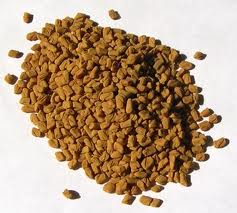
Patients with prediabetes and diabetes have a significantly increased risk of cardiovascular diseases. Currently, the management of hypoglycaemia includes pharmacological interventions, physical exercise and change of lifestyle and diet. Food supplements have increasingly become attractive alternatives to prevent or treat hypoglycemia, especially for subjects with mild hyperglycaemia. Fenugreek showed the most consistency in lowering fasting blood sugar (FBS) or glycated haemoglobin (HbA1 c) levels in diabetic patients. The research on fenugreek also indicates significant cholesterol regulating activity, thus lowering cardiovascular risk.

Green tea rates a mention as there is extensive research on this popular drink. It is shown to be beneficial in many ways. It reduces fasting blood glucose (FBG) levels in trials and has significant anti inflammatory activity, reducing C-reactive protein. Overall, research has shown regular consumption of green tea to reduce hyperglycemia, prevent renal injury, reduce cardiovascular risk and reduce organ damage in diabetics. Three cups a day would be beneficial.
Chromium, Gymnema and Vanadium
Chromium reduced glycosylated haemoglobin (HbA1 c) and fasting blood glucose (FBG) levels in a large meta-analysis. Chromium is a major component of glucose tolerance factor and supplementation has been shown to increase the number of insulin receptors, to enhance receptor binding and to potentiate the activity of insulin.
Gymnema sylvestre reduced HbAlc levels in two open-label trials. Vanadium reduced FBG in small trials.
Magnesium
With excessive urination associated with diabetes, deficiency of magnesium is a common problem. Low magnesium itself increases the risk of insulin resistance, as adequate levels play a role in modulating glucose transport across cell walls. Common symptoms of low magnesium are cramps, spasms and twitches as well as anxiety.Magnesium (along with calcium) calms the nervous system.
‘Low magnesium has also been shown to have a role in the development of diabetic complications such as high blood pressure, kidney failure and neuropathy
Lipoic Acid
A supplement shwoing great promise in regulating type 2 diabetes is Lipoic Acid. Lipoic Acid is an important cofactor in multienzyme complexes.It enhaces glucose uptake
in muscles and has positive effects on insulin senstivity.It is also a major anti oxidant for th eliver. A dose of 400-800 mg a day is beneficial.

Supplementation with Silybum marianum and Trigonella foenum-graecum may improve glycaemic control in type 2 diabetes by improving HbAl c. Silybum marianum also improved FBG. It is a major antioxidant for the liver and improves detoxification pathways.

Stevia rebaudiana has been used in the treatment of diabetes for many years in Asia and South America. The plant contains stevioside, a non-toxic sweetener that reduces postprandial blood glucose levels in NIDDM patients, showing significant beneficial effects on glucose metabolism. Stevioside stimulates insulin secretion via direct action on the beta cells of the pancreas. It also has the benefit of tasting sweet (up to 30 times the sweetness of sugar) so there are few problems with compliance. Consuming stevia daily significantly reduces cravings for both sugars and fats — vitally important if changing your diet to deal with diabetes.
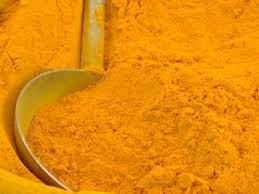
The ancient spice turmeric is anti-inflammatory and antioxidant and has been used for many purposes. One of its roles has been to reduce blood sugar levels in diabetics. It has a long, multicultural history of use as a “therapeutic” spice (and colouring agent). Its rhizomes have been reported to possess anti-diabetic properties in experimental animal models. The active ingredient, curcumin, is responsible for its anti-diabetic and anti-inflammatory action.
Ginkgo (Ginkgo biloba)
Chronic elevation of glucose level activates vascular inflammation and increases endothelial adhesiveness to monocytes, an early sign of atherosclerosis. Ginkgo biloba reduces high-glucose-induced endothelial inflammation mainly by inhibiting interleukin-6 activation. It has positive activity on the cardiovascular system and assists in the regulation of blood pressure.
Improve Gut Function
Improving gut function is critical in most dysfunctional states of health. In naturopathic terms, if you fix the gut, some say you will fix 80-85 per cent of human health issues.
It stands to reason. If your digestive system is not functioning correctly — evidenced by symptoms such as reflux, heartburn or wind and bloating or alterations in bowel habits — then foods (even well-chosen ones) and the nutrients you need are not going to be digested correctly. As a consequence, nutrient deficiencies and metabolic problems will result.
Choose your foods wisely. Eat those with a low glycaemic index and that are whole, fresh and preferably organically grown. Eat a wide variety of fresh foods, focusing on those that are in season, ensuring you eat enough green, leafy vegetables (a source of magnesium).
Chew correctly (slowly) until your food is pulverised. This is particularly important for proteins.
Remember that your food is probably your greatest environmental challenge. We are constantly putting things in our mouths that are “not us” and they have to be processed so we can utilise them.
Avoid processed foods and any foods known to be sprayed with pesticides. This is why organic foods are usually better: They have fewer chemicals and more nutrients if grown correctly.
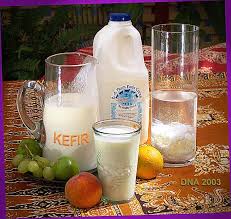
Slippery elm powder will repair gut lining and encourage growth of beneficial bowel bacteria. A teaspoon a day (eating mixed in with yoghurt helps to get it down) with a large glass pure water will improve many areas of gut function in most people . There is evidence to suggest that consumption of fermented milks (yoghurt/kefir) assists in blood sugar regulation.
Improve Liver function
To improve liver detoxification, there are numerous and herbal medicines of choice. The common ingredients in them are the polyphenols/flavonoids, quercetin and catechin. These are readily available in drinks such as green tea (catechins) and brightly coloured vegetables and fruit that contain high levels flavonoids such as quercetin. Flavonoids are major antioxidant and anti-inflammatory compounds. St Mary’s thistle and turmeric also improve liver function.
Quercetin has multiple roles. It is powerful in reducing inflammation, it assists in the repair of the pancreas, it protects against neural damage from environmental PCBs and it improves liver detoxification . Taken with bromelain for improved digestion, it can be an important supplement. It also helps reduce kidney injury caused by hyperglycaemia.
Check the chemicals in your cosmetics and avoid any with phthalates. Plastic bottles must be BPA-free as this substance is one of the major endocrine-disrupting chemicals for the body.
Exercise and Diabetes

Type 2 Diabetes is a growing disease which is having a major effect on world populations and it is a disease that needs to be treated with care on every level. By bringing awareness to how we live, what we eat, crucial supplements and our general wellbeing , we can be proactive and play a large part in how this disease affects our lives and those around us.
 Stress affects this process as the stress
Stress affects this process as the stress
